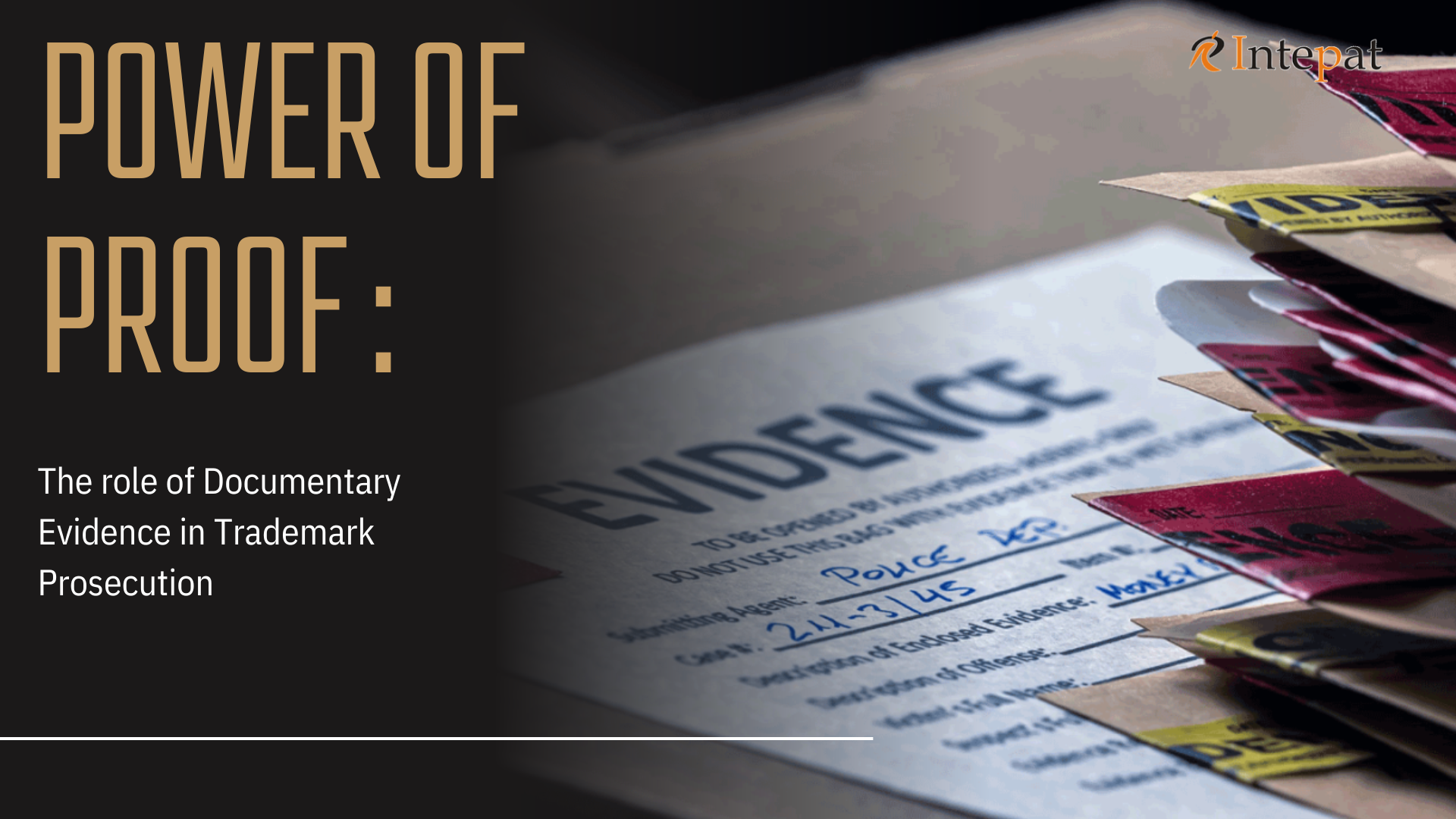
Power of Proof: The Role of Documentary Evidence in Trademark Prosecution
Intellectual Property is often aligned with intangible assets such as inventions and creations. When it comes to trademark prosecution, it is highly crucial to substantiate your creation with appropriate supporting documents to make your case strong. Supporting evidence is important in any court of law because every allegation or demand in court has to be supported by some evidence; otherwise, it would be considered baseless.
In India, the law of evidence is governed by the Indian Evidence Act, 1872, which plays a central role in trademark prosecution.
Under Section 3 of the Indian Evidence Act, 1872, “evidence” includes:
The court in Kamdhenu Ltd. v. The Registrar of Trade Marks emphasized the importance of documentary evidence in establishing the well-known status of a trademark. It highlighted acceptable forms of evidence such as invoices, promotional and advertising materials, enforcement records, market surveys, and financial documents.
Submitting the right kind of evidence at different stages of trademark prosecution is critical for successful registration. Evidence helps establish bona fide use and provides strategic defence during oppositions, cancellations, or challenges from third parties.
Documents such as sales receipts, advertisements, and shipping records prove that the trademark has been actively used in commerce. This evidence is essential in demonstrating prior use and acquired distinctiveness. For trade dress or non-conventional trademarks, it also shows that the features serve as a source identifier.
When a trademark is opposed or challenged in cancellation proceedings, documentary evidence becomes indispensable. Sales records, advertising expenditures, and market share figures help counter arguments that the mark is descriptive, generic, or abandoned.
In infringement suits and anti-counterfeiting actions, documentary evidence proves validity and extent of use. Licensing agreements, royalty payments, and quality control records demonstrate compliance and proper usage of the trademark.
For international registrations, evidence from the home country strengthens applications and helps overcome examiner objections, building a case for transborder reputation.
Continuous documentation prevents claims of abandonment, which may arise if a trademark remains unused for a prolonged period without justification.
Photographs of product packaging, labels, or advertising materials displaying the trademark demonstrate continuous use.
Evidence of advertisements—including digital campaigns and e-commerce listings—highlights consumer recognition and goodwill.
Screenshots of the trademark in use on websites or social media prove its presence in the market.
Sales invoices and receipts act as solid proof of commercial use of goods and services under the trademark.
Government certifications and brand-related licenses reflect authenticity, goodwill, and credibility.
Trademark registrations in foreign jurisdictions help establish transborder reputation and brand value globally.
A notarized affidavit confirming prior use of the mark in commerce carries strong legal validity.
Awards, industry recognition, and customer appreciation reinforce the goodwill and reputation of the brand.
The trademark MOPLAH’S, representing a Malabari restaurant in Bangalore, was supported with extensive documentary evidence. Licenses, advertisements, invoices, social media presence, and customer reviews all strengthened the registration process and highlighted the distinctiveness of the brand.
In the case of The Bengaluru Café, evidence from social media platforms, listings on food delivery apps, and prior registrations in other classes provided a strong foundation for protection. This demonstrated the café’s reputation and helped secure the trademark successfully.
Countering opposition and defending trademarks requires comprehensive and credible evidence. Documentary evidence is vital in:
Without strong documentary evidence, trademarks remain vulnerable to opposition or cancellation. With robust documentation, trademark owners can defend their rights, secure their registrations, and ensure their brand remains a valuable business asset.
At Intepat IP, we specialize in building strong trademark cases backed by documentary evidence. Whether you are registering a new trademark, defending against an opposition, or enforcing your rights internationally, our team can guide you through every stage.
👉 Contact us today to safeguard your trademark with the right evidence.
Documentary evidence refers to materials such as invoices, advertisements, packaging, and certifications that prove the trademark’s use, reputation, and distinctiveness in the market.
Invoices, receipts, sales records, advertisements, website screenshots, and affidavits of prior use are considered strong forms of evidence in trademark proceedings.
Yes. Social media presence, posts, and online engagement showing consumer recognition of the mark can serve as supporting documentary evidence, especially for proving goodwill and reputation.